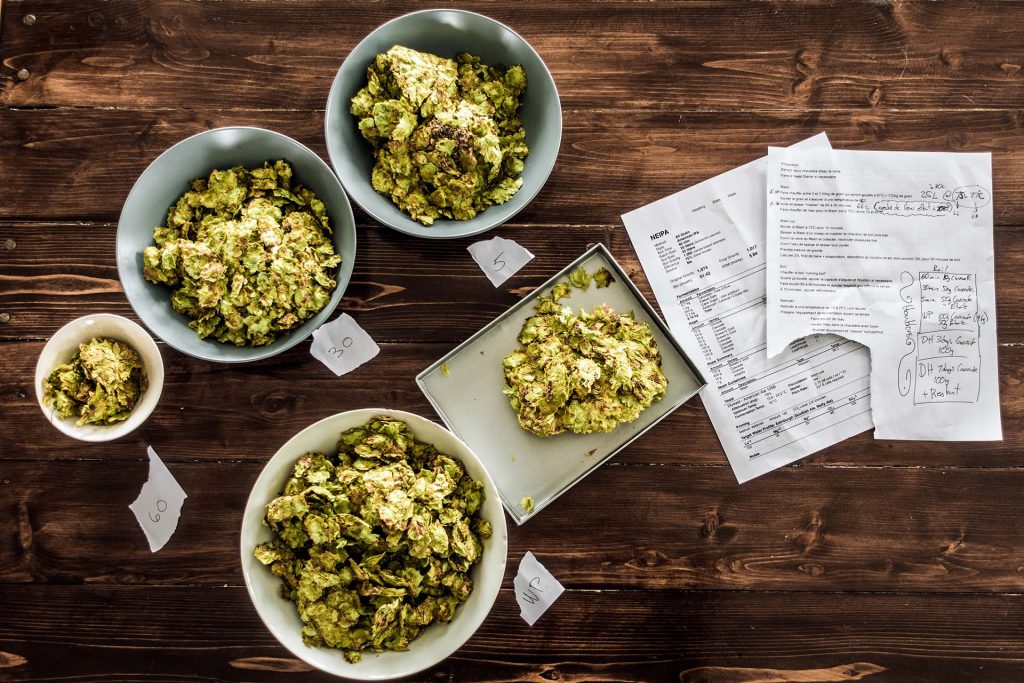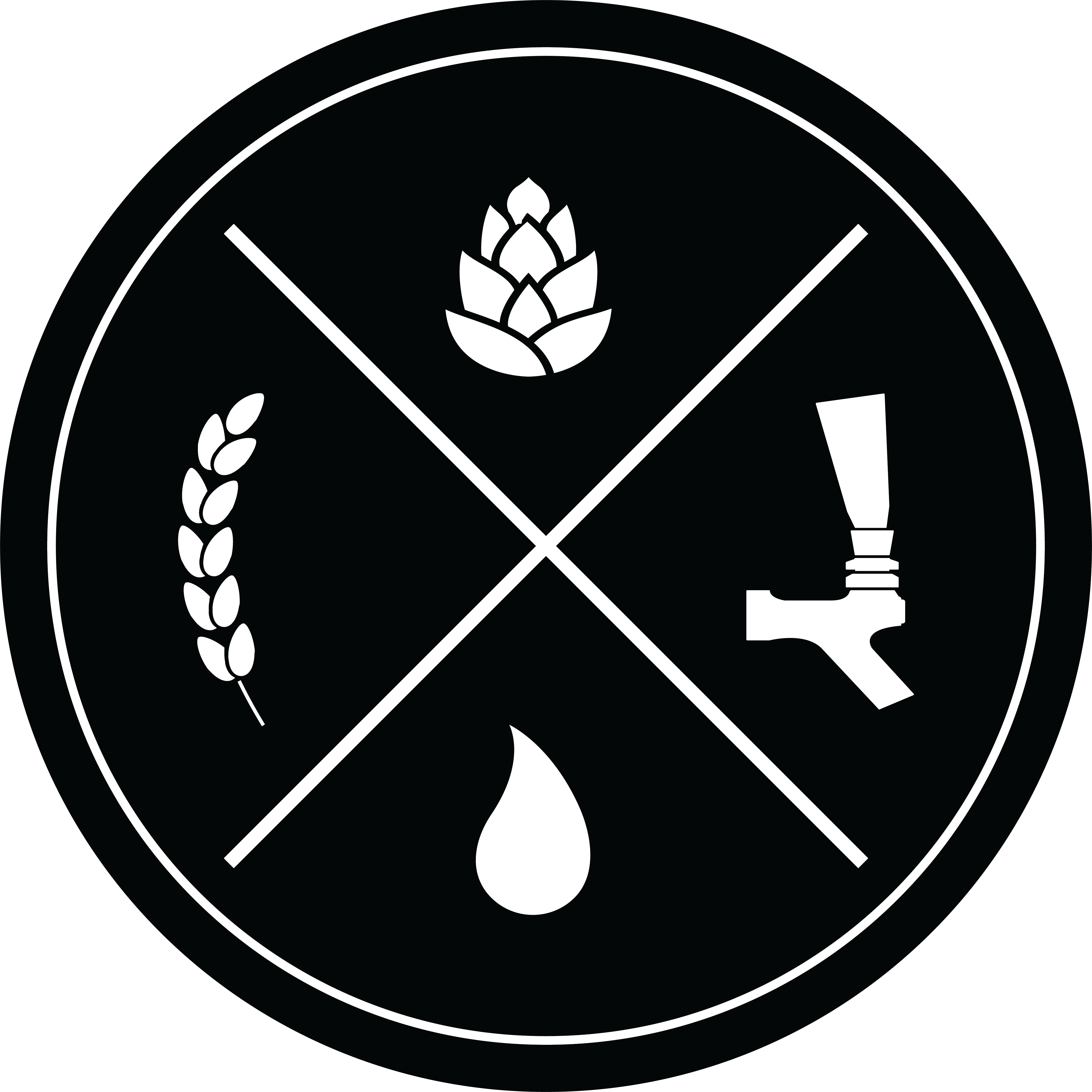
When I started brewing in 2017, I just wanted to brew the clearest brightest IPA I possibly could. I used several different fining agents including gelatin, Biofine clear, and Whirlfloc. I wanted the beer to be so translucent that you could read a magazine through it. Flash forward two and a half years and now I find myself trying to create the haziest IPA possible. While NEIPA’s have become extremely popular amongst professional breweries, they have become an even more desirable creation with the home brewing community. Homebrewers are constantly trying to match the appearance, flavor, and aromas often found at popular breweries such as Treehouse, Trillium, and The Alchemist. In late 2018 I made my first attempt at mastering this style, and while the beer was most certainly drinkable, it still lacked many of the characteristics found in this relatively new style. I used a ton of flaked wheat and flaked oats, in hopes that my beer had as much opacity as a tall glass of heavily pulped orange juice. No matter how hard I tried I still fell short with one facet or another. Over the next several months I worked on developing a silky mouth feel, juicy flavors, unique aromas, and most importantly creating a stable haze that could be produced without merely shaking the keg prior to pouring each pint. While I still haven’t mastered the perfect NEIPA, I feel like I am very close to reeling in this white whale.

Featured Product

Juicy Sundrops NEIPA
This isn’t your Grandfather’s IPA. This fruity, “juicy”, hazy ale looks, smells, and tastes like straight up fruit juice. Bountiful citrus aroma & flavor cascade in every pint you pour. What are you waiting for? It’s time to join the Haze Craze!
$38.24
Order Now
Water and the Grain Bill
Initially I thought that the most important ingredients to a perfect NEIPA were yeast and flaked malts, such as wheat and oats, but after several attempts I discovered that there were far more factors to consider. The first variable to consider is the water chemistry being used to brew. NEIPA’s require a water base higher in calcium chloride and lower in sulfate. In fact, many experts agree that a good starting ratio is a 2 ppm of chloride to 1 ppm of sulfate. Some brewers have even gone as much as 2.5 to 3 ppm to 1 ppm. I tend to stick close to the 2 to 1 ratio, which places my water profile around 190 ppm chloride to 90 ppm sulfate. Using this profile on my latest NEIPA produced a fantastic silky mouthfeel.
The next major characteristic that I focused on was color. I wanted a nice bright orange appearance that could easily be mistaken for orange juice, but everything I had produced to this point appeared too amber or copper in color. I tried a variation of caramel malts to produce the orange hue, but it wasn’t until I tried Viking caramel 150 that I finally got close to the desired shade. I attempted to use Vienna malt and I noticed that it enhanced the orange color even more. I finally discovered the sweet spot was around 2% Viking caramel 150 and 2% Vienna malt. Combined with 80% Viking pale 2 row I was finally able to produce the preferred color.
Next, I moved on to the specialty grains that would produce the haze I was seeking. For this I turned to flaked oats and flaked wheat. I had been told by a number of brewers that 15 or 20% of the grain bill should include these unmalted grains, but after a bit of research I discovered that using too many flaked grains could lead to unwanted oxidation, even if all the necessary steps were taken to avoid it. So, I scaled back the unmalted additions to around 6.5% each. Dropping this part of the grain bill lowered the amount of haze slightly, but it also avoided the undesirable taste of oxidation as well. In the final 3% of the grain bill I include rice hulls to help avoid any potential stuck sparge I might encounter.
Hop additions
With the water profile and grain bill in place it’s now time to focus on the all-important hop additions. There is a huge debate among brewers regarding the hop schedule for NEIPAs. Some will have you believe that you should never introduce any hops into the kettle during the boil. There goal is to extract all of the flavors and aromas during the whirlpool. Some, on the other hand will tell you that it doesn’t hurt to include a hop addition late in the boil. Still others will stick to a more traditional hopping and at least add a 60-minute addition along with a 20 to 25-minute whirlpool. In reality it comes down to a matter of preference. I personally have tried no additions until whirlpooling, as well as late boil additions. I prefer a NEIPA that has some backbone, so I perform a first wort hop during the sparge. Once I have about 20 minutes left in the sparge I will add .5 to 1 oz of a mid-level Alpha Acid hop such as Amarillo or Galaxy. Once boil begins, I will wait until there is about 10 minutes left in the boil upon which I will add a small dose of flavorful hops like Citra or Azacca. When the boil has finally ended, I will kill the heat source and begin to cool the wort until it reaches 185 F. At that point I will turn the chiller off and re-fire the heat source to maintain the whirlpool temp, and then I will add a generous dose of hops. I will stir the wort for 20 minutes and then once again kill the heat source and turn the chiller back on. Once the wort has been chilled to about 68 F I will transfer to the conical, and drop the air stone in. I like to let the stone aerate the wort for about 10 minutes before I pitch the yeast.
Over the past few months I have begun to focus deeply on limiting cold side oxidation, especially when dry hopping. To accomplish this, I dry hop while the wort is still fermenting. With NEIPAs I like to dry hop between 24 and 48 hours into fermentation so that there is plenty of CO2 still in the conical to eat up any oxygen that may enter when I open the hop port.
Pitching the perfect yeast
Yeast selection is key in creating the perfect NEIPA. I have talked to several brewers that use WLP066 London Fog, Wyeast1318 London Ale, Imperial A38 Juice, or Imperial Yeast A04 Barbarian. I have achieved some pretty outstanding results with A38. It really tends to enhance citrus fruit esters that are highly desired in an NEIPA. No matter which yeast you choose I would always recommend using some type of yeast nutrient to give the yeast a little extra kick.
There are a lot of people that will tell you NEIPAs are produced from lazy brewing practices, but I would debunk that by saying some of the most complex brew days that I have ever had involved the creation of Hazy Juicy IPA’s. In my personal opinion NEIPAs are some of the easiest drinking and most satisfying home brews one can create and I would highly encourage you to give it a shot at least once before passing a negative judgment.

